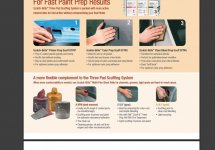Hi, Ive been making cues for quite a few years and tried just about every finish there is from clear coat to water base and back to clear coat. My question is this. Before I start building coats of finish and by the way I use Nason Clear coat. I seal with a lacquer sanding seal after sanding to 1000 grit. I usually put about 3 coat of sealer on the butt and allow to dry and build slightly but the wood are still porus and somewhat open grained in places and I end up putting 5 or 6 coats of finish on the cue having to sand between and its a real pain the ass. I love the result. Clear and deep and exposing the grains the way a finish should. Ive never used epoxy to seal the cue. My concerns are color for one and clarity. Ive dont even know how to apply it or what kind to use. Does it sand well and how long to cure. I know therse are a bunch of questions but I want to do things right. Appreciate any suggestions and thanks.
Mark
Mark

